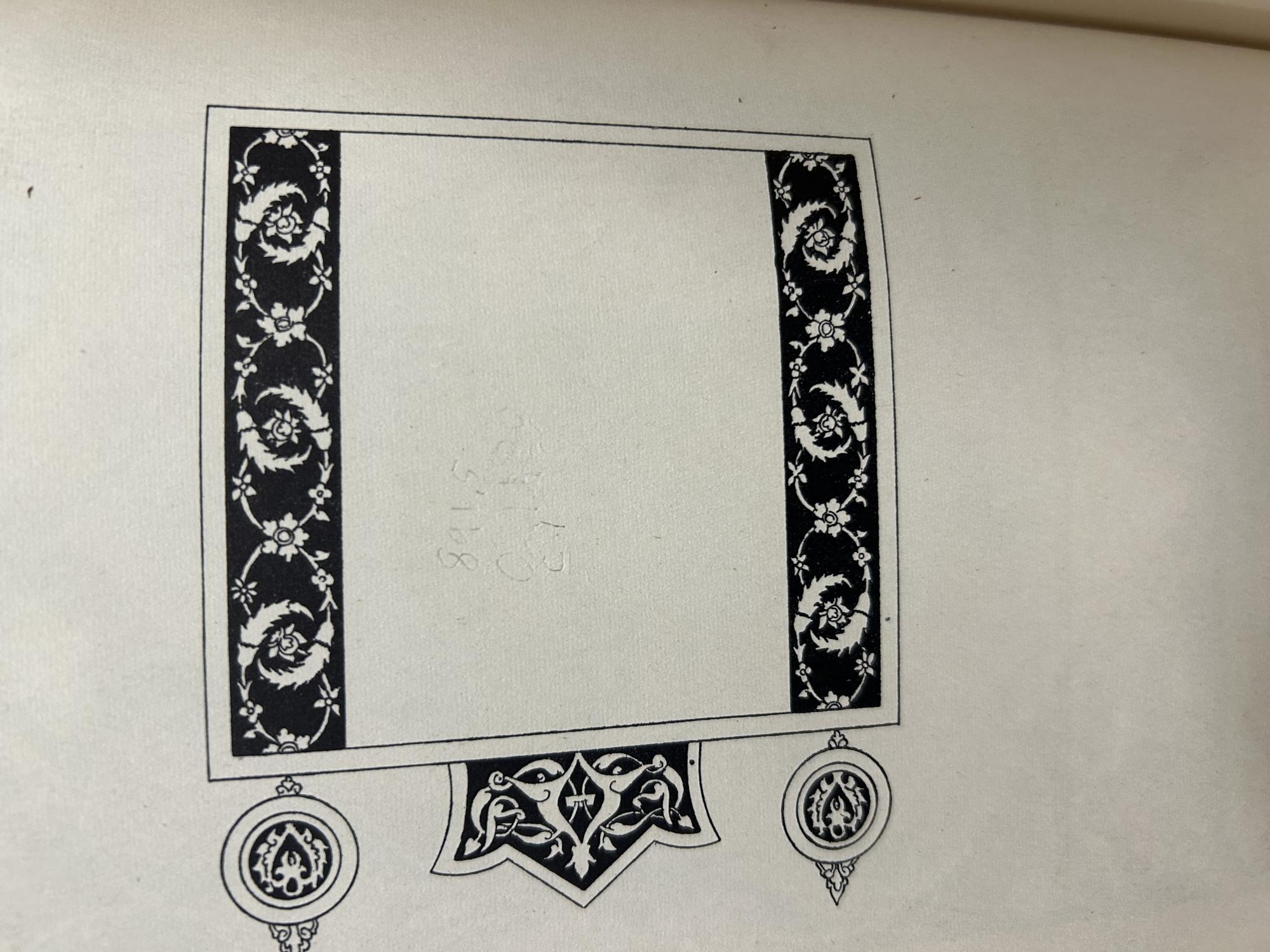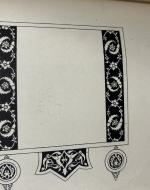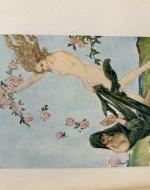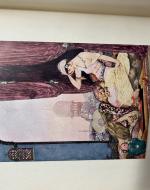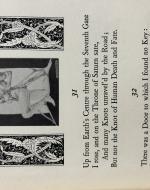Created by Katelyn Maloney on Fri, 05/05/2023 - 03:21
Description:
In Barbara Black's On Exhibit, she breaks down the surge of popularity that FitzGerald's translation experienced, as well as the techniques that were used to promote it and their inherently orientalist nature. Much of the visualization used in the publishing, she argued, was meant to shallowly imitate a "Persian" style with strong usage of ornaments and rich and fancy iconography. In doing so, Black states that the text was diminished to its often elaborate design, gaining notoriety through that rather than its actual contents, as seen in the line, "Susceptible to a miniaturizing that is consistent with the popular miniature packaging of the Rubáiyát, this poem's value becomes inseparable from its pretty, crafted, possessable diminutiveness (60-1)." The theme of possession is the strongest in On Exhibit, correlating the two as thoroughly intertwined. The concept of the gift book will often bind it to the concept of a "treasure book," a commodity rather than a consumable. How Black describes it is beautiful in its conciseness, "Its reception as a treasure book and curio suggests that the reader shore up copies not for their ruin, but against their ruin (61)." In the common trend of changing the poem into this commodity, Black sees it as changing the cultural ties from authentically Persian to bowing to English standards in "Persian costume (64)." On Exhibit tells of a strange mixture of trying to erase the exotic, and tame it.
This edition of the Rubáiyát is remarkably unmarked for its age of almost a century. The edition itself shows multiple signs of being printed with the long history as a gift book in mind, including a decorated empty box panel on the opposite page to the title (see Figure 1), presumably for an inscription from the gifter. However, there is no writing found within the work, no annotations or markings besides the occasional smudge of what is presumed to be graphite. In this lack of personalization, my edition becomes a relatively perfect example of what Black argues the poem has become. The Rubáiyát is left untouched in a traditional sense, in the way that Black would argue showcases a predisposition towards possession. However, due to the continuous minor marks of life left behind, I would argue that this may instead come from the original owner's philosophy in how they treat the books they own. The lack of annotation does not equate a lack of dedication to the book, for many avid readers don't annotate or are very careful to try and preserve the text as much as possible. Instead, there is a worn feeling to the text, although there are no true signs of damage, as if it has been thumbed through many times in the privacy of a study. In terms of a gift book, this text is silent, but shows itself in its body language.
However, the edition itself falls perfectly into the Orientalist tropes that Black highlights. As an art minor, I chose this edition due to the rich illustrations and ornaments littered throughout its contents, so naturally many of the visuals are representatives of this issue, as well as a good example of the "exoticism" of gift books. The illustrator, Willy Pogány, is a Hungarian artist famous for his fairy tale "Art Nouveau" style. Although this style works well in the indulgent and lush scenes depicted in the translation, there is a fundamental flaw in hiring this Hungarian illustrator. In some of the colored illustrations, there is a noticeable 'whitewashing' of the characters (see Figures 2 and 3), and strong stereotypes of the culture presented (see Figure 4). Although every party involved may be considered white, they all come from vastly different bacgkrounds, with Khayyám being Persian and Pogány being Eastern European. The rich ornaments are starkly different from those used in English publishing, with harsher contrasts and heavier line art (Figure 5). The gilded cover is a perfect example of the 'treasure' imagery Black invokes in her argument. There is merit to be had in having beautifully illustrated texts, and just because it is heavily illustrated does not equate to being Orientalist, but in this specific edition there are tropes that point to Orientalist themes.
Citations:
Black, Barbara J.. On Exhibit: Victorians and Their Museums. United Kingdom, University Press of Virginia, 2000.
Khayyám, Omar. Rubáiyát of Omar Khayyám. Translated by Edward FitzGerald, illustrated by Willy Pogány, New York: Thomas Y. Crowell Company, 1935(?).
Copyright:
Associated Place(s)
Part of Group:
Featured in Exhibit:
Artist:
- Willy Pogany

